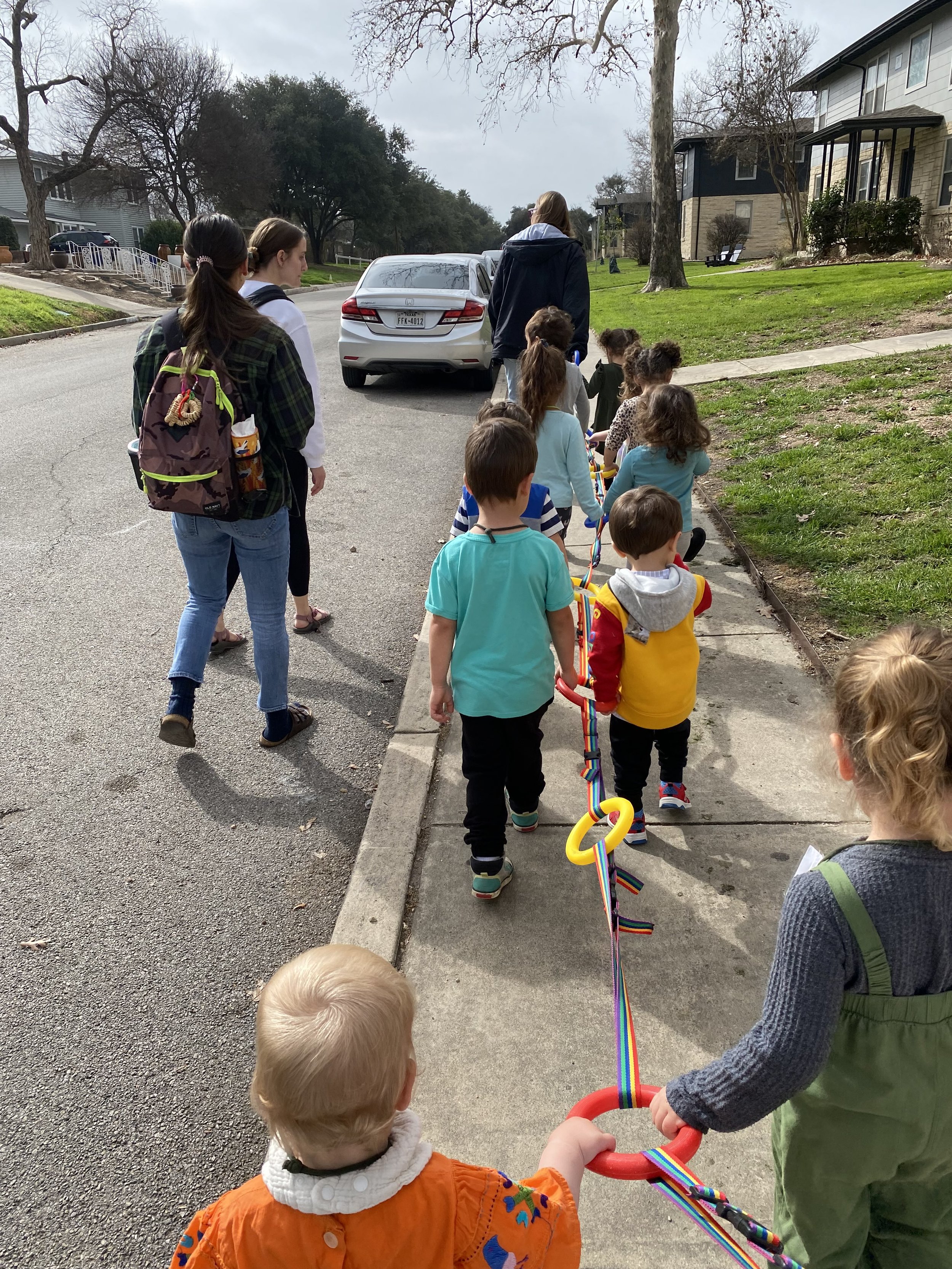We Are A Neighborhood, Nature-based School
10/19/23
I have been teaching and working in nature based settings for more than 10 years now. I worked at a zoo, I worked at a nature center. Both of those places are beautiful places with acres of land that is carefully managed, although in two very different ways. I was getting my masters degree at the same time that I was working in these places and I did my masters research on the importance of nature play in the development of young children. I identified behaviors in young children that occur when they are playing in nature & not naturally in other settings. For example - the close observation of things like roly polys or snails or acorns; the change over time of trees (budding, growing leaves, leaves changing, dropping leaves); the far away looking for a bird (or airplane) in the sky. I have seen the power of nature to change the minds and spirits of young children.
When the Sprouting Curiosity Collective began looking for a location for Sprouts School we first started looking in similar places to the zoo or the nature center. We approached city parks, we approached natural spaces, we approached gardens, we approached ranches & farms. None of these spaces were quite right for what we were dreaming about. We wanted to nature based play accessible for more kids. We wanted kids and parents to embrace the idea that nature play happens everywhere.
Then I meet Taylor & Amber & Jess (the Sunset Ridge Collective), and everything felt right about it from the very beginning. There’s going to be this lovely nature park on our campus soon, the classroom spaces are really beautiful, everyone was very welcoming, the neighborhood is great.
I did a tour recently for a parent who wondered where the forest was, where the nature was. I explained that nature is everywhere. That anywhere where two or more species are interacting - there is nature. That we have already seen those behaviors that I was describing in my masters thesis in the kids. We’ve talked about squirrels, we’ve looked at roly polys, we’ve noticed the changes in seeds, we’ve seen birds (and airplanes) flying. All the things that you are looking for in a nature school are happening right here.
One of the concepts that we start to broach with the kids is the idea of habitat. A habitat is like the neighborhood for a creature or plant. So, if we think about the jays that we keep seeing & (mostly) hearing, their habitat is the red oak trees that we eat under. They eat the acorns & bugs in the trees, they build nests high up, they are protected from the cats so high up in the trees. We watch them fly around those trees too, finding food & friends in other trees as well. They are using many of these canopy trees as their habitat. We talk about this in a general way with the kids when we talk about animals, as the concept of space, the area that an animal needs to get the water, food, & shelter that they need to survive.
When I was doing my masters’ research, I didn’t really think about habitat very much in the context of the kids though. I have been thinking a lot about it though since I toured that parent. I’ve been thinking about how important it is to be a part of your habitat. I’ve been thinking about how when I was teaching at the zoo or at the nature center, the kids and the teachers and I were not expecting to be a part of the habitat. We were visitors to these places, observers of the plants & animals that lived in these spaces. We visited the tall grass prairie and we ran through it. We visited the tiger, we observed her from a safe distance. We talked about our experiences and we learned information about prairies and tigers to extend our experience, but at the end of the day we left. We were not really a part of these habitats.
That is the incredible gift of the school we are now. We are truly a part of the community. We are in partnership with the Sunset Ridge Collective. We have met the mail carrier & waved at the trash collectors. We check on the feral cats every day. We leave accidental food treasures under our picnic tables for those jays (and mockingbirds and grackles and sparrows) in the red oak trees (we have noticed that they will eat our peanut butter & jelly scraps, but do not seem to be interested in pineapple). Even more than that though, we have identified places in our little habitat that we can venture to. I’m hoping we’ll be some of the first guests in Charis Park. I’ve talked to the Head of Education at the McNay and she has welcomed us to explore their grounds whenever we want and to do some tours of the museum with them in the spring. I know the organizer of the Terrell Heights Community Garden and she has welcomed us to explore the garden. I’ve talked to the owners of Boss Bagel and they are welcoming us to walk down the hill and experience how they make bagels. All these places and more are within pretty easy walking distance of our little school. They are all in our neighborhood, in our habitat. And we are glad to be a part of it. Not just visitors, but humans who live in community with a neighborhood, with a habitat.
We are not just a nature school. We are a neighborhood nature school.
Thanks for being a part of it.
